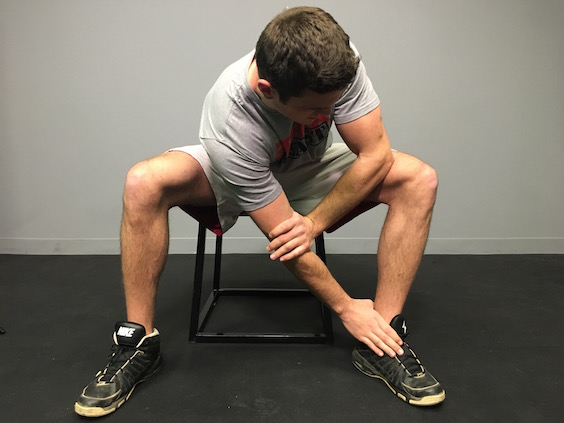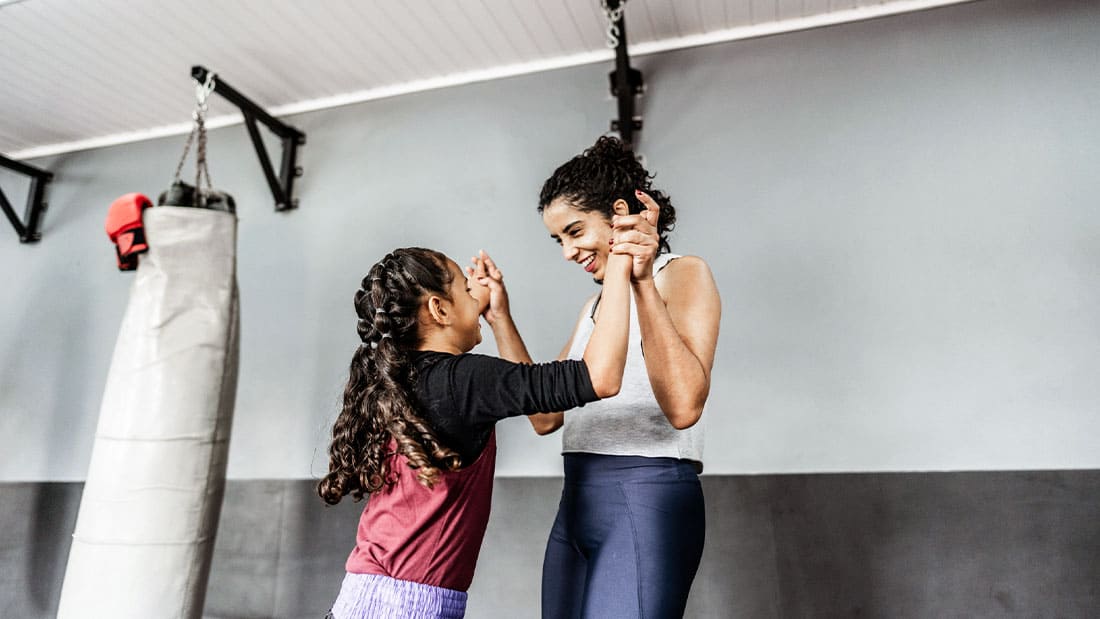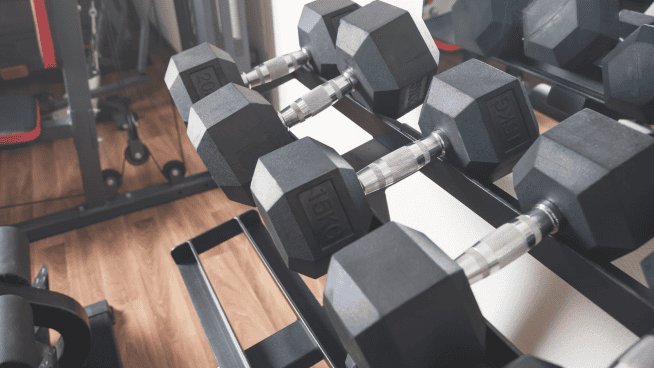Prevent ‘Text Neck’ With 3 Simple Exercises
You know that hunching over a computer for a long period of time is bad for your posture. But texting on your smartphone—that seemingly harmless activity you think only takes a couple of seconds at a pop—may also be setting you up for a host of problems, including headaches, neck pain and spinal issues.
The issue is becoming so common that the medical profession has even given it a name—“text neck.” And a new study published in Surgical Technology International puts the dangers of text neck in a particularly troubling light.
The study, led by Dr. Kenneth Hansraj, Chief of Spine Surgery at New York Spine Surgery and Rehabilitation, attempted to examine the amount of force that staring down at a cellphone places on your neck and cervical spine. The researchers found that depending upon the exact angle of your head, this position causes up to 60 pounds of force to be placed on those crucial bones and discs.
Consider that phone owners between the ages of 18 and 24 send an average of 67 texts per day, and teenagers 14-17 send closer to 100 (both numbers are according to a 2013 study by the Pew Research Center). Pair this with the fact that we also look down at our phones to play games, check email, send Snapchats and order delivery food, and before you know it, the average teen is spending two to four hours a day, or between 700 to 1,400 hours a year, with his or her head in this damaging position.
RELATED: Why Is Poor Posture So Bad?
Physical therapist and strength and conditioning specialist Mike Reinold explains that the body adjusts to whatever position it’s in, which, over time, can lead to muscle imbalances based on those adaptations. He says, “When you have poor alignment and muscle imbalances, with some areas that are tight, some that are weak, and some that just don’t want to work at all, you are putting yourself at risk for injury by potentially overloading one of these tight areas with repetitive strain.”
The best remedy for text neck, according to Reinold, is to stop it before it starts. Cutting down on the amount of time you spend texting or browsing the web on your phone is the first obvious answer. Being more conscious of the position of your body when you do text is the second. Try to hold the phone up so your eyes look straight ahead rather than down. And to strengthen the muscles that support your head, neck and cervical spine, add the following three moves to your workout.
Arm Extensions Against Wall
Reinold recommends performing this move, in which you lean forward to place your forehead against a wall with your elbows raised to the level of your head and your hands behind your head. Extend your arms out over your head and return to starting position.[youtube video=”H5zmkW5EO6s” /]
Chin Nod/Tuck
From a sitting or standing position, tuck your chin back and forth. “You don’t want to jam your neck straight back and combine upper cervical flexion with shear force,” Reinold says. “Rather, you may want to start with more of a chin nod rather than a chin tuck.”[youtube video=”_AknIUAwvP0″ /]
“Shoulder W”
Reinold also suggests this move, in which you stand up straight with a resistance band held between your hands, which are held shoulder-width apart. Your elbows should be bent 90 degrees. Retract your shoulder blades as you pull your hands apart. Your elbows should form a “W when you reach the end of the external rotation.
[youtube video=”_G0feLqXA0E” /]Check out the video player above for additional neck strengthening exercises from strength and conditioning coach Todd Durkin.
RELATED: 4 Exercises to Fix Bad Posture and Help You Move Better
RECOMMENDED FOR YOU
MOST POPULAR
Prevent ‘Text Neck’ With 3 Simple Exercises
You know that hunching over a computer for a long period of time is bad for your posture. But texting on your smartphone—that seemingly harmless activity you think only takes a couple of seconds at a pop—may also be setting you up for a host of problems, including headaches, neck pain and spinal issues.
The issue is becoming so common that the medical profession has even given it a name—“text neck.” And a new study published in Surgical Technology International puts the dangers of text neck in a particularly troubling light.
The study, led by Dr. Kenneth Hansraj, Chief of Spine Surgery at New York Spine Surgery and Rehabilitation, attempted to examine the amount of force that staring down at a cellphone places on your neck and cervical spine. The researchers found that depending upon the exact angle of your head, this position causes up to 60 pounds of force to be placed on those crucial bones and discs.
Consider that phone owners between the ages of 18 and 24 send an average of 67 texts per day, and teenagers 14-17 send closer to 100 (both numbers are according to a 2013 study by the Pew Research Center). Pair this with the fact that we also look down at our phones to play games, check email, send Snapchats and order delivery food, and before you know it, the average teen is spending two to four hours a day, or between 700 to 1,400 hours a year, with his or her head in this damaging position.
RELATED: Why Is Poor Posture So Bad?
Physical therapist and strength and conditioning specialist Mike Reinold explains that the body adjusts to whatever position it’s in, which, over time, can lead to muscle imbalances based on those adaptations. He says, “When you have poor alignment and muscle imbalances, with some areas that are tight, some that are weak, and some that just don’t want to work at all, you are putting yourself at risk for injury by potentially overloading one of these tight areas with repetitive strain.”
The best remedy for text neck, according to Reinold, is to stop it before it starts. Cutting down on the amount of time you spend texting or browsing the web on your phone is the first obvious answer. Being more conscious of the position of your body when you do text is the second. Try to hold the phone up so your eyes look straight ahead rather than down. And to strengthen the muscles that support your head, neck and cervical spine, add the following three moves to your workout.
Arm Extensions Against Wall
Reinold recommends performing this move, in which you lean forward to place your forehead against a wall with your elbows raised to the level of your head and your hands behind your head. Extend your arms out over your head and return to starting position.[youtube video=”H5zmkW5EO6s” /]
Chin Nod/Tuck
From a sitting or standing position, tuck your chin back and forth. “You don’t want to jam your neck straight back and combine upper cervical flexion with shear force,” Reinold says. “Rather, you may want to start with more of a chin nod rather than a chin tuck.”[youtube video=”_AknIUAwvP0″ /]
“Shoulder W”
Reinold also suggests this move, in which you stand up straight with a resistance band held between your hands, which are held shoulder-width apart. Your elbows should be bent 90 degrees. Retract your shoulder blades as you pull your hands apart. Your elbows should form a “W when you reach the end of the external rotation.
[youtube video=”_G0feLqXA0E” /]Check out the video player above for additional neck strengthening exercises from strength and conditioning coach Todd Durkin.
RELATED: 4 Exercises to Fix Bad Posture and Help You Move Better












